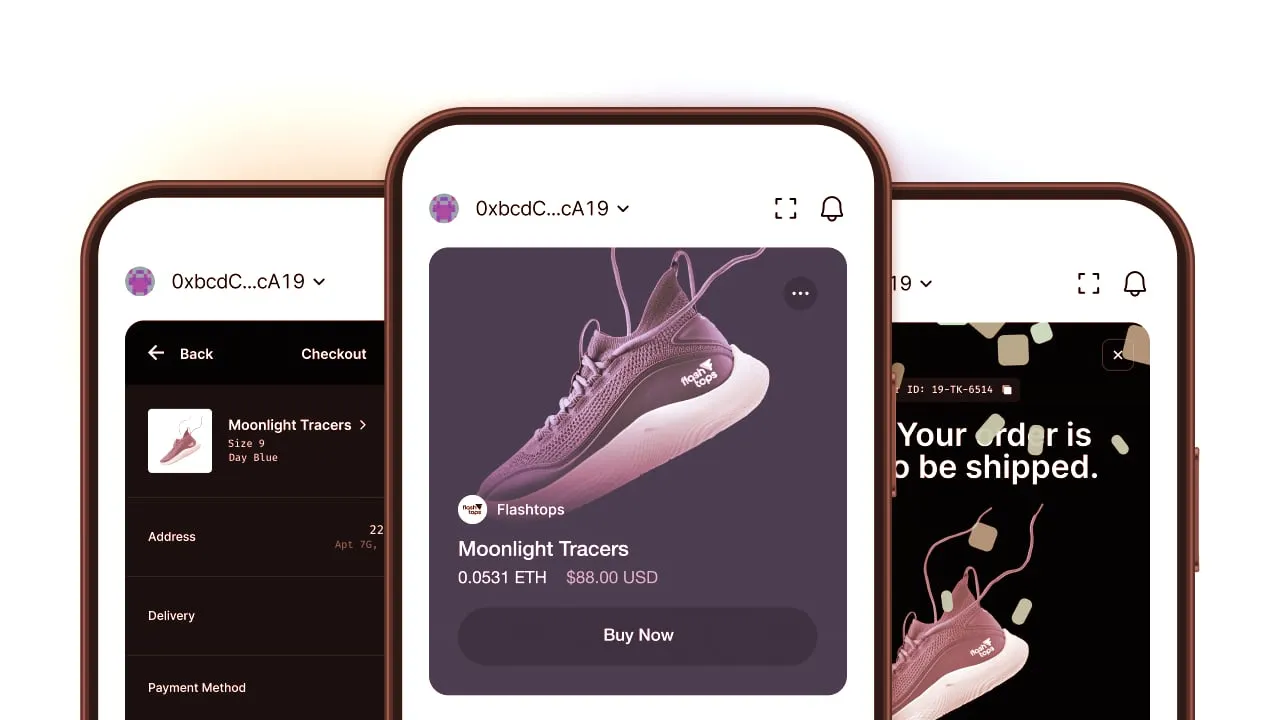The move from Web2 to Web3 will be an evolution rather than a revolution.
There’s no one switch that gets flipped, said Byron Sorrells, CEO and cofounder of Dispatch, a commerce and engagement startup incubated within IEX Group, Inc. that helps brands build Web3-enabled marketing and communication experiences.
“A lot of people think there has to be this big, binary change,” Sorrells told Decrypt. “But that’s not the reality.” Change is facilitated, not forced, he added.
With more “normies” in the world right now than crypto enthusiasts, NFT collectors and blockchain gamers, if regular people are going to cross the bridge from Web2 into Web3 experiences, Sorrells said, the technology they’re exposed to needs to be easily understandable and broadly accessible.
Why overcomplicate things?
One of Dispatch’s core innovations is what the company calls “cards,” which are dynamic assets that brands can embed into their website or app with four lines of code.
A card like the one above can enable almost anything. Brands can use them to sell items, share video messages or music, dole out rewards, create polls, do trivia, post a countdown clock for an exclusive product drop or send images to a person’s wallet.
Say someone wants to buy a product online, like a beanie or a shirt. Rather than using a checkout tool from PayPal, Amazon or Shopify, they can pay using their wallet with just a few clicks and the transaction is represented through an NFT.
But it’s also okay if someone doesn’t yet have a digital wallet. They can authenticate with an email address and a credit card or through Apple Pay, and Dispatch will automatically build a wallet for them on the backend.
"People can interact with Web3 almost without knowing that they’re doing it."
The UX is purposely similar to what people are already used to doing on the web today, said Sean Spector, a product manager at Dispatch.
“People can interact with Web3 almost without knowing that they’re doing it,” Spector said. “Brands do a really nice job in their traditional businesses—so why overcomplicate things, just because you’re going to sell in a new way?”
Familiar tools
But although some brands are enthusiastically embracing Web3, others are more cautious.
Considering the scary headlines over the past five months, their reticence is understandable, Sorrells said—hence why Dispatch is focused on making the move to Web3 feel “less like a paradigm shift and more like experimenting with a new social network.”
💡 "I believe having a dedicated arena & experience that sets the standard for NFT wallets and allows the user to see their wallet as a home base without having to engage in outside mediums like email, Twitter, etc."
-@portergeer of @DispatchXYZ on the #WalletCon2023 Side Stage pic.twitter.com/Wnam0dy1V5
— WalletCon (@WalletCon_) March 1, 2023
Brands need access to familiar tools and metrics to help them drive business results and get a return on their investment, Sorrells explained. You can’t really expect them to dive in without those things.
Dispatch enables the sort of funnel and engagement tracking that brands expect from any of their marketing and analytics tools.
In a commerce situation, for instance, Dispatch can see how many people convert, who clicked but didn’t convert, whether someone came back later to buy something or whether someone bid on an item and lost.
A deeper connection
Businesses can also gather more novel insights about their customers through Web3 as well as control their brand experience.
A luxury brand, for example, can use the NFTs associated with its products to track resales on secondary markets or to limit the resale of digital goods.
Or a fashion retailer can get feedback from its community about what colors they prefer. The brand could give more weight to responses from loyal customers and offer them special discounts down the line for apparel in the colors they prefer.
That sort of interaction creates a much deeper connection with customers than just encouraging them to fill out a web form or leave a Trustpilot review, Spector said.
NFT (IRL)
But for a really deep connection, the experience can’t only happen online.
During the second week in April, Dispatch is opening a physical pop-up shop to coincide with the NFT NYC event in New York City.
The retail experience will be token-gated, meaning that people will have to buy digital NFTs through Dispatch cards that they’ll be able to redeem in the store for an eclectic mix of real items.
Brands featured include Joe Coffee, Ledger, a Brooklyn-based florist, a furniture company and multiple clothing brands, including Lacoste.
Blurring the lines between online and offline is one way to streamline the retail experience, but it also highlights that Web3 can help real people buy real stuff in a real store, Sorrells said.
“This isn’t just some vague Web3 digital NFT world,” he said. “It’s real commerce.”
Make it easy
Still, a brand might wonder why they need to make the leap to Web3 when it’s already possible to send messages, buy things, share videos, post polls and all the rest of it on Web2.
Sorrells has gotten that question before.
“I was telling someone the other day about all of the different things we can do and they were like, ‘Oh, that’s cool, but why? As in, why the Web3 aspect?” he said.
The answer—portability and trust—is as simple as the experience has to be in order for brands (and their customers) to come on board.
For decades, developers have invested a lot of time in making web technology more user-friendly. Smartphones autofill verification codes from text messages. Online forms remember our selections. Email addresses automatically populate as suggestions in email drafts.
But with the complexity of digital wallets and the blockchain, “we’ve undone a lot of those easy flows,” Sorrells said.
"This isn’t just some vague Web3 digital NFT world—it’s real commerce."
Which begs one more question: What has to happen to get the next billion people comfortable enough and ready to interact with Web3?
“It’s actually just about continuing to do the same thing we’ve all been doing for the past 30 years,” Sorrells said. “Let’s make it easy for people.”
Sponsored post by Dispatch
Learn More about partnering with Decrypt.

